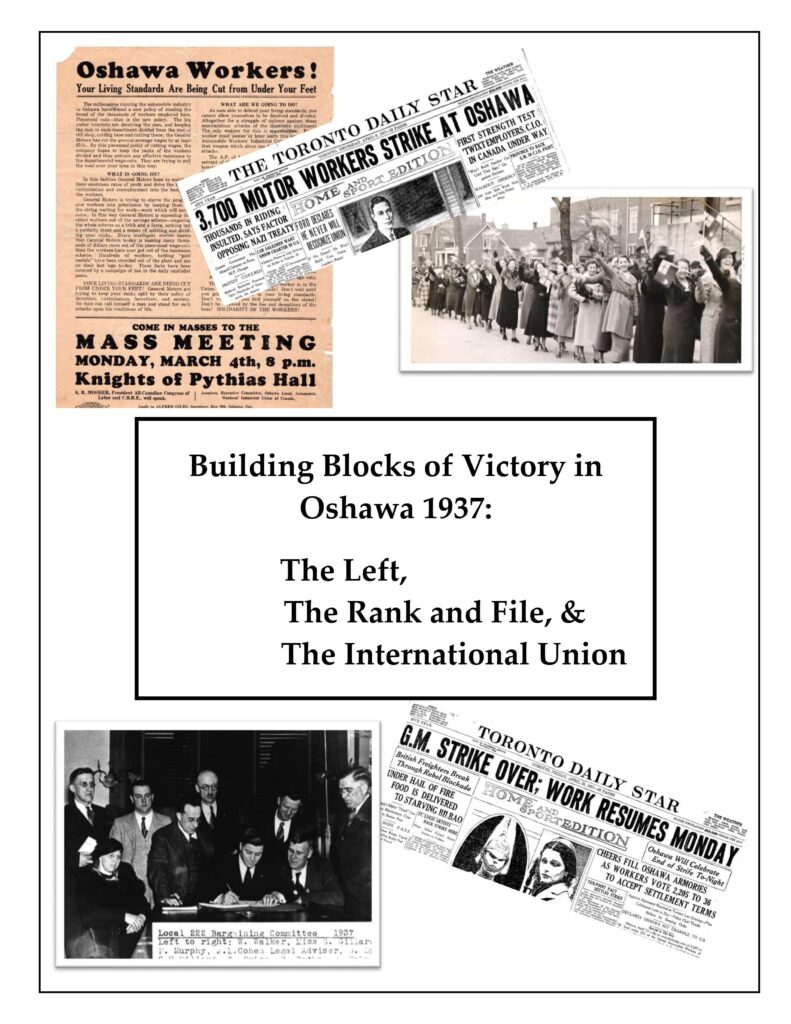
Tony Leah, MA Thesis, School of Labour Studies, McMaster University, October 2023.
This MA thesis provides a comprehensive new analysis of the historic Oshawa strike against General Motors in April 1937 that established industrial unionism in Canada.
Abstract
The Oshawa 1937 strike against General Motors was a major turning point in Canadian labour history. This thesis explores the factors that led to its success, including the historical background of working class struggle; the economic and political context of the times; prior organizing by Communists; the engagement of rank-and-file GM workers and the remarkable stewards’ body they established; and the support and leadership of the UAW International union. The thesis shows there was overlap and interplay between these factors. The influence of the strategic outlook of Communists, both in Oshawa and in the UAW more broadly, meant that the 1937 strike incorporated many features of what might now be called rank-and-file unionism: industrial unionism, democratic engagement of rank-and-file workers, militancy on the shop floor, building solidarity within the workforce and in the community, international solidarity, and rejecting cooperation with corporations.
My research focus was on the voices and actions of rank-and-file workers as much as possible, and on the remarkable day-to-day events of the strike itself. The thesis demonstrates that many of the events and lessons of the strike have been little understood or have been misinterpreted. In particular, I reexamine and correct the long-accepted conclusions of Irving Abella that the Oshawa workers were “on their own” without significant support from the UAW/CIO leadership, and that they (or the Canadian labour movement) would have been better off if they did not organize under the banner of an international union. The thesis also demonstrates that Abella failed to grasp the degree to which rank-and-file principles were embodied by the strike and were crucial to its success. The contending forces of workers, corporations, and rabidly anti-union governments that clashed in Oshawa in 1937 are largely the same ones we see in the battles going on in North America today. Thus, understanding the factors that led to the success of the Oshawa strikers can provide valuable lessons to those seeking to revive today’s labour movement.
